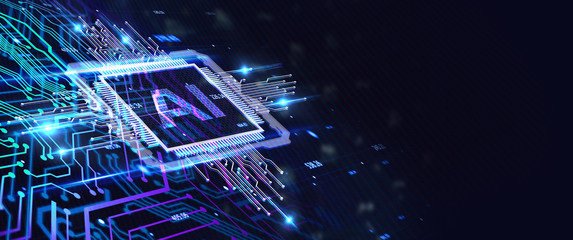Table of Contents
Developments in IoT and RFID technology (that is, radio frequency identification technology) have revolutionized how businesses are able to track, identify and distribute assets.
If you’re involved at any level of the supply chain, chances are that devices that rely on the internet of things (IoT) factor heavily into your day-to-day operations. Businesses across many industries, from manufacturing and distribution to retail and healthcare, have relied on RFID tags to manage and track inventory for years.
Researchers expect the number of IoT devices to accelerate at a compounding annual growth rate of 25.4% through 2028. As this technology develops, however, its applications continue to evolve and grow.
In this post, we’ll discuss recent RFID and IoT developments, and we’ll explore how business leaders are using IoT and RFID reader technology to transform the global supply chain.
How are RFID and IoT Technology Related?
Simply put, the internet of things (IoT) refers to physical devices that exchange data with other systems and devices over the Internet, through the use of sensors, software, etc. A growing field of technology, IoT makes it easier than ever to access, share and interpret data.
IoT devices can take many forms; think smart devices and appliances, autonomous equipment, biometric passports, etc. As part of Industry 4.0, industrial IoT utilizes this technology for industrial purposes, thus improving efficiency and productivity within the companies that use it.
RFID technology and IoT are inextricably linked. In short, RFID technology is an enabler of IoT, in that it makes it easy to turn any item into one of the “things” that make up the Internet of Things.
An RFID system is basically an asset management system. Any RFID system will include both tags or labels and an RFID reader, which captures, through electromagnetic fields, the information contained within the tags. Unlike barcodes, which readers must scan directly, RFID tag data can be read without a direct line-of-sight to the RFID tag and multiple tags at a time.. It’s possible to equip each RFID tag with its own unique identifying number, which makes it even easier to manage and distinguish between items.
Learn about the industries Lowry Solutions serves: |
It’s possible to mark assets with either a passive RFID tag, which lacks its own internal power source, or an active RFID tag, which does have an internal power source and therefore enables real-time tracking. In other words, an active RFID tag can transmit up-to-the-minute information about items—information that one can rewrite or update as necessary, making it highly valuable when integrated with mobile device management solutions for enhanced asset monitoring and control.
By tagging items with an RFID label, those items gain intelligence, and thus become part of IoT infrastructure. Businesses use RFID tags for everything from simply tracking the location of assets and preventing inventory loss to maintaining up-to-date information about the temperature, weight, color, etc. of items.
Developments in Industrial IoT & RFID Technology
With RFID and IoT technology getting better by the day, some experts estimate that the global industrial IoT market will reach $344.7 billion by 2026.
The possible uses of the integration of IoT and RFID reader technology are virtually endless; businesses can connect literally any device to the IoT with an RFID tag, which means that organizations could create an IoT out of all of their physical assets.
The possibilities of IoT and RFID don’t stop with objects; it’s even possible to connect humans and animals to the Internet, applications that countless hospitals and farms, for example, have already utilized to save lives and prevent loss.

Credit: geralt
At Lowry Solutions, our own state-of-the-art software, Sonaria, has helped our clients take advantage of all that the Internet of Things has to offer. A hybrid cloud-based and on-prem IoT platform, Sonaria is capable of accepting input from almost any source in real time, and can automatically automate, error proof and optimize operations.
Sonaria also collects analytics that help businesses glean important insights and make appropriate changes.
To further discuss the benefits of RFID and IoT projects and explore how Sonaria, Lowry Solutions’ cutting edge IoT and RFID software-as-a-service can bring your company into the future, contact us today for a free consultation.
Also Read: RFID Technology Different Types


